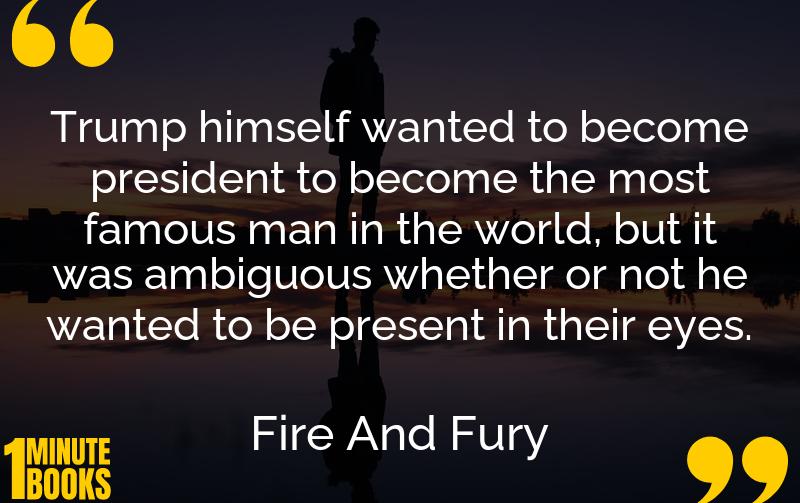
Fire and Fury provides an explosive account of the first nine months of Donald Trump’s presidency, revealing the chaos, internal discord, and controversial workings within the White House.
Main Lessons
- Trump’s presidency was marked by intense chaos and unprecedented division in American politics.
- There was a lack of experience and traditional political norms within Trump’s campaign and administration.
- Trump craved media attention and approval, yet often felt victimized by ‘fake news.’
- His presidency was characterized by spontaneous tweets and unconventional governance methods.
- The administration’s communication was deemed one of the most dysfunctional in modern history.
- The White House staff struggled to control or influence Trump’s unfiltered approach.
- Trump’s inability to process information, his short attention span, and a disregard for traditional political operations were highlighted.
- Trust issues and paranoia affected Trump’s nominations and his White House circle.
- Bannon’s view highlighted Trump’s propensity to attack and rebel against established institutions.
- Personal and impulsive decision-making often overshadowed strategic political moves.
- Trump’s lack of planning led to numerous political setbacks, despite his desire to win.
- His administration’s internal discord and legal controversies posed constant challenges.
- There was a focus on defending against allegations, with a strategy of reacting to short-term media narratives.
- Despite being elected, Trump’s knowledge of politics was minimal, showcasing a reliance on instinct over informed strategy.
- Ultimately, the narrative portrayed a presidency in constant turmoil, raising doubts about Trump’s ability to function effectively in the role.








